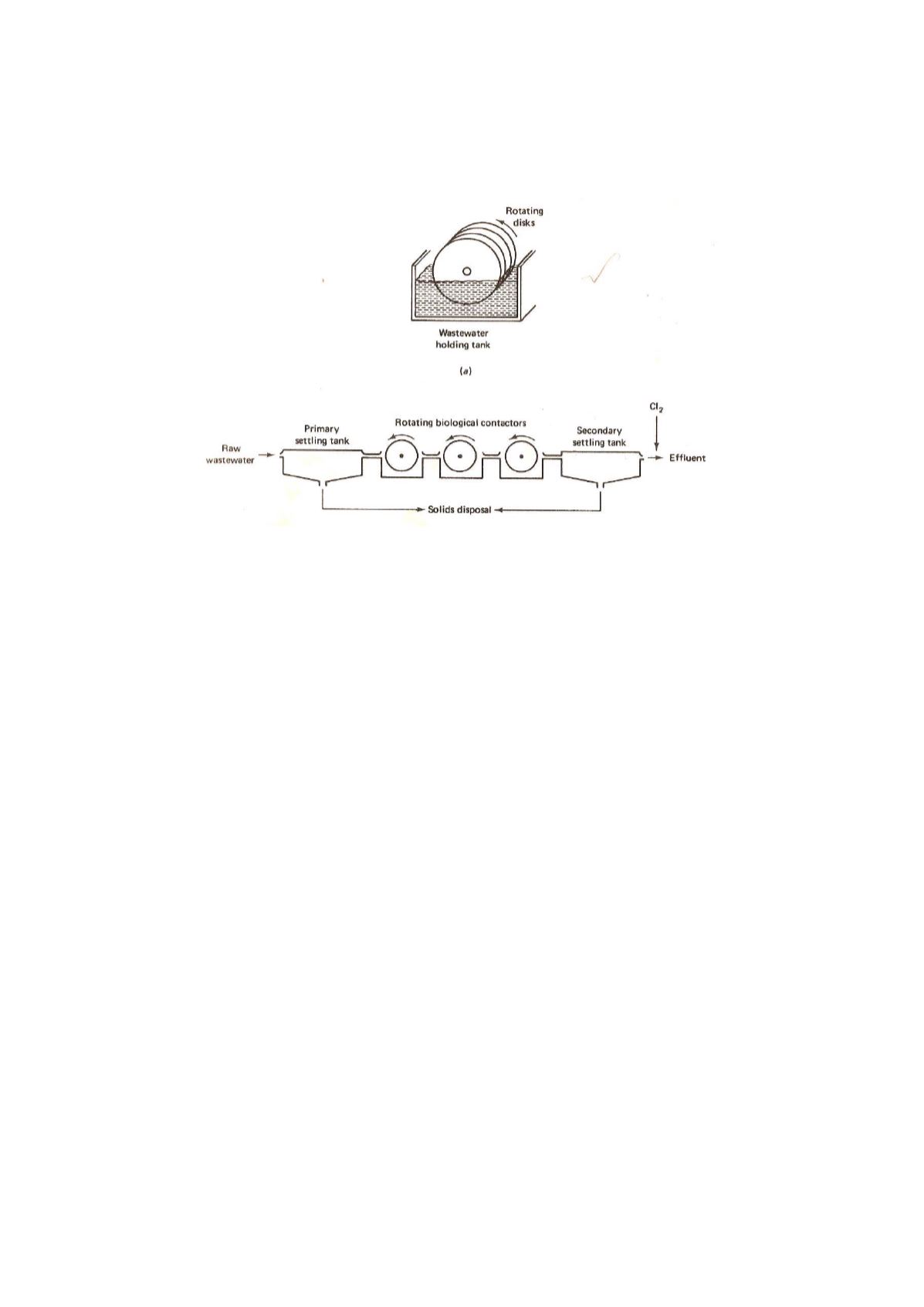
120
Fig. 7.3 : Rotating biological contactor cross section and treatment system (a) RBC cross
section; (b) RBC treatment system
(After Gilbert, 1955)
Sludge Tratement :
Sludge treatment is a very important step in the waste water treatment
process, at least from the environmental point of view. Sludge may be as high
as 2% of volume of water treated and huge amount of sludge is removed from
the waste water treatment plants. Since sludge contains mostly organic
compounds, they are treated in an anaerobic condition in two stages (a) to
convert organic compounds to organic acids by using acid forming bacteria
and (b) to methane by using methane forming bacteria. The second process is
very sensitive to change of pH which is caused by organic acids produced and
when the pH comes down around 2, the product needs to be treated with huge
amount of lime. Methane gas produced during the second stage of operation is
collected and used as a source of energy. Stabilised wastes contain mostly
water and are dewatered in a pond by evaporation and seepage. The wastes
after drying may be used as land fill.


